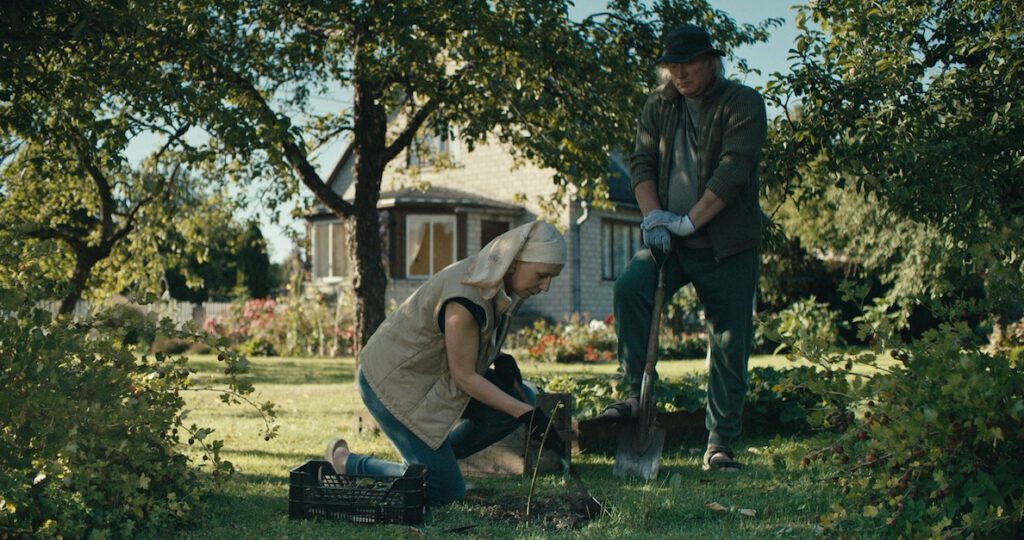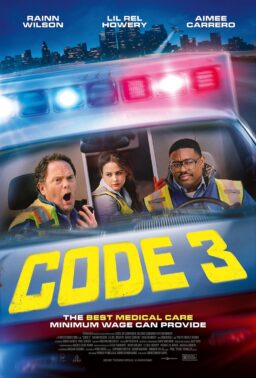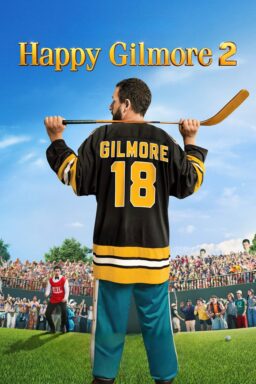Created by a team of talented Estonian women, “Mother” walks a tightrope between deadpan and farce, a portrait of patience and womanly drudgery that then turns itself inside out in the final moment, calling into question all that had been set up before. Directed by Kadri Kousaar (her third feature), with a screenplay by Kousaar’s frequent collaborators Leana Jalukse and Al Wallcat, “Mother” stars the wonderful Tiina Mälberg as the character known as “Mother.” Being a mother is her only role, especially since her 20-something son Lauri (Siim Maarten) was recently shot in a holdup at an ATM and now lies in a coma in his childhood bedroom. Nurses come to visit every day to massage his legs and check on his condition, but his primary caretaker is his Mother. In that context, the word “Mother” starts to sound and feel very different. Time stretches out before her endlessly. If he doesn’t recover … then what? Mother is in her 50s, and her main job of parenting was done, until Lauri was shot. Is it even okay for a Mother to admit that she might feel … just a little bit stuck? While this all sounds pretty bleak, “Mother” is not a bleak film. The fact that it contains so many humorous moments (it plays mainly as a comedy) is a testament to Kousaar’s confident approach.
“Mother” takes place in a quiet suburban town in Estonia, and its opening sequences show Mother going about her daily tasks. She cooks. She cleans. She works in the garden. She goes shopping. She changes her son’s diaper. She cooks again. She bathes her son. Her life is a parade of never-ending tasks. Her husband Arvo (Andres Tabun) sits in front of the television at night, waiting for his dinner, tromping mud on Mother’s clean floor. But Mother is not aggrieved, or complaining, or even frustrated. She does what she does because this is how she has always done it. Someone has to clean the house and take care of Lauri. Her tasks organize not only her days but her emotions.
Mother’s face is a mask of blind concentration. When she cleans, that is her only focus. When she cooks, that’s all she’s doing. The house is dark, cramped, but immaculate. Upstairs lies the young man, eyes open, unresponsive. It is hard to know what she feels about any of it, and in that respect the opening sequences reminded me of Chantal Akerman’s masterpiece, “Jeanne Dielman, 23 Commerce Quay, 1080 Brussels,” with its similar in-real-time presentation of everyday housewife-ly tasks. What is it all leading to?
Soon enough, though, “Mother” turns a corner, revealing an eccentric, almost loopy heart, in direct opposition to the quiet nothingness of Mother’s demeanor. Lauri, the boy in the coma, is a cipher at first, but one by one by one (it never stops), people knock on the door to come visit him. Each character sits by his bed, talking to him. Mother eavesdrops at the door. She learns a lot about her son that she never knew. Lauri’s shooter was never found, and the investigation into the crime continues. There’s some missing money. Lauri must have stashed it somewhere. Everyone who shows up wants to get their hands on it. Nobody shakes the coma-struck man screaming, “Where is the money???” but that’s how many of them feel.
Any time a scene commences, a knock on the door interrupts it. The knocking on the door gets funnier and funnier each time it repeats. Scenes are never allowed to complete themselves. It’s a madhouse. One girlfriend visits Lauri, as another girlfriend knocks on the door downstairs. They don’t seem to know about each other. Mother, then, is not just a housewife. She is a conductor of human traffic up and down the stairs (and, of course, she has to offer everyone a snack before they leave), as well as a spy, a double-agent, and a collaborator. Something went down with Lauri, and where is that money, and who will find it first? It’s a measure of Kousaar’s directorial gift that the fact that Lauri’s condition is irrelevant to all of these people is hilarious.
The character of Mother is at the center of all of this activity. Tiina Mälberg walks around in her housedress and apron, spray bottle or carving knife or garden trowel in hand. She has effaced herself from the world. You would not glance at her twice. Her true nature is buried deep underneath the stone-faced surface, and as the events intensify, and the police investigation heats up, her “self” starts to emerge, and it’s a continuous revelation. Still waters run deep, as they say, and Mother the character is as still and as deep as they come.
Part of the fun of “Mother” is the multiple reveals that go on: each scene peels back a layer, each scene provides a new fragment of information. There’s a lot of re-adjustment of first impressions that goes on throughout. It’s a beautifully structured script, and extremely theatrical (“Mother” would work very well on the stage, especially since most of it takes place in one location.) The theatricality works. That house is claustrophobic. No wonder everyone wants to bust out of it.
Jean-Noel Mustonen is the cinematographer, and he finds ways to make those prosaic rooms seem strange, or beautiful. The kitchen never looks the same from scene to scene. The focused lighting and dark walls, not to mention shooting from through a doorway in the next room, creates an extremely unbalancing effect. Identical scenarios play out in the same spaces, and each time a scene circles around to repeat (different people sitting down in the kitchen for snacks prepared by Mother, different people sitting down in the chair next to Lauri’s bed), the momentum of the film heats up. The structure is a comment on repetition itself, on the tiny things that may start out slightly annoying and increase each time they repeat. Who could bear such boredom? Is life meant to be that kind of prison sentence?
Kousaar’s style is not kitchen-sink realism. There’s a heightened sensibility at work. She is tuned into farce, heaving subtext, and rampant absurdity. Nobody in the film thinks anything is funny at all, and (of course), that’s the funniest thing about it.












